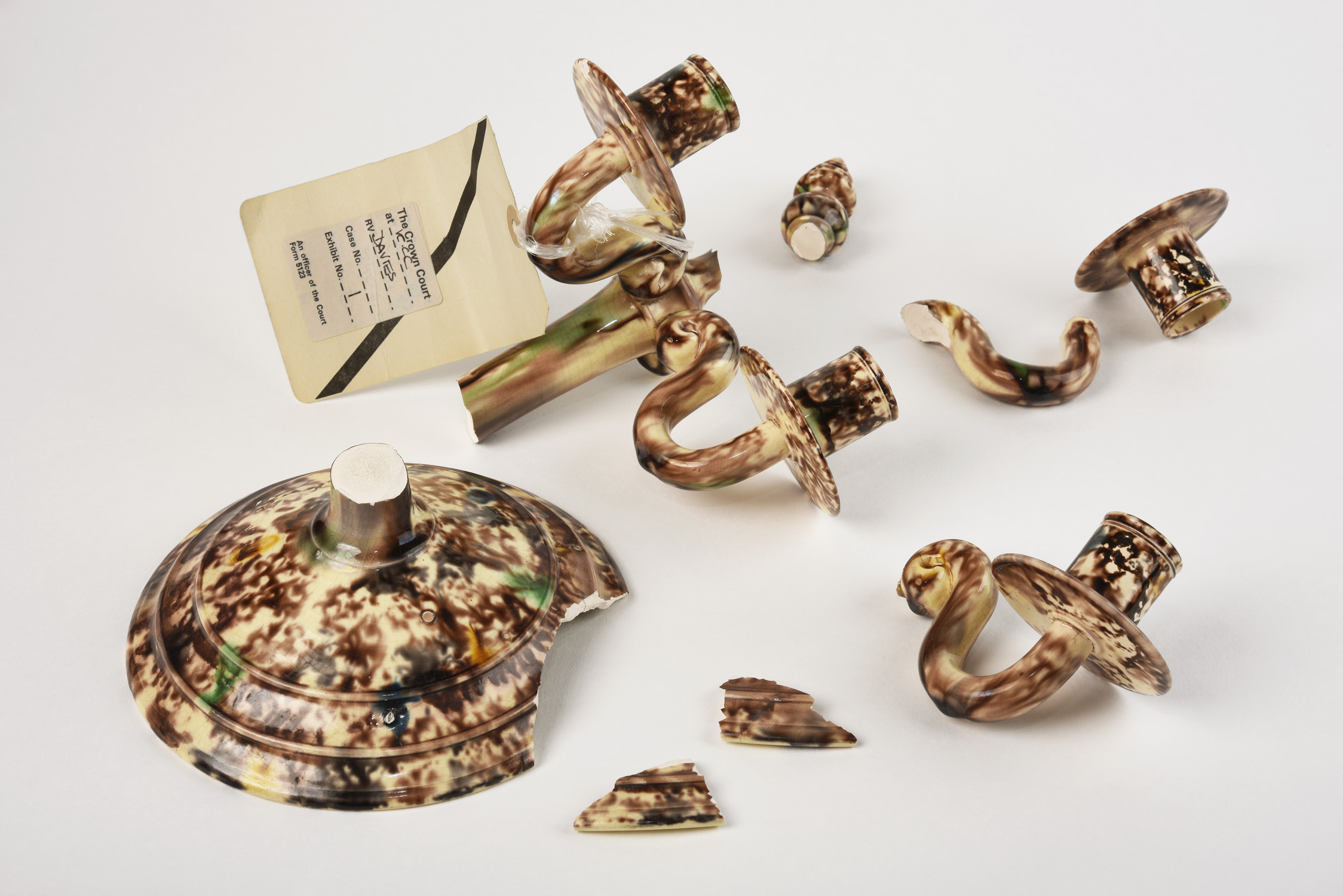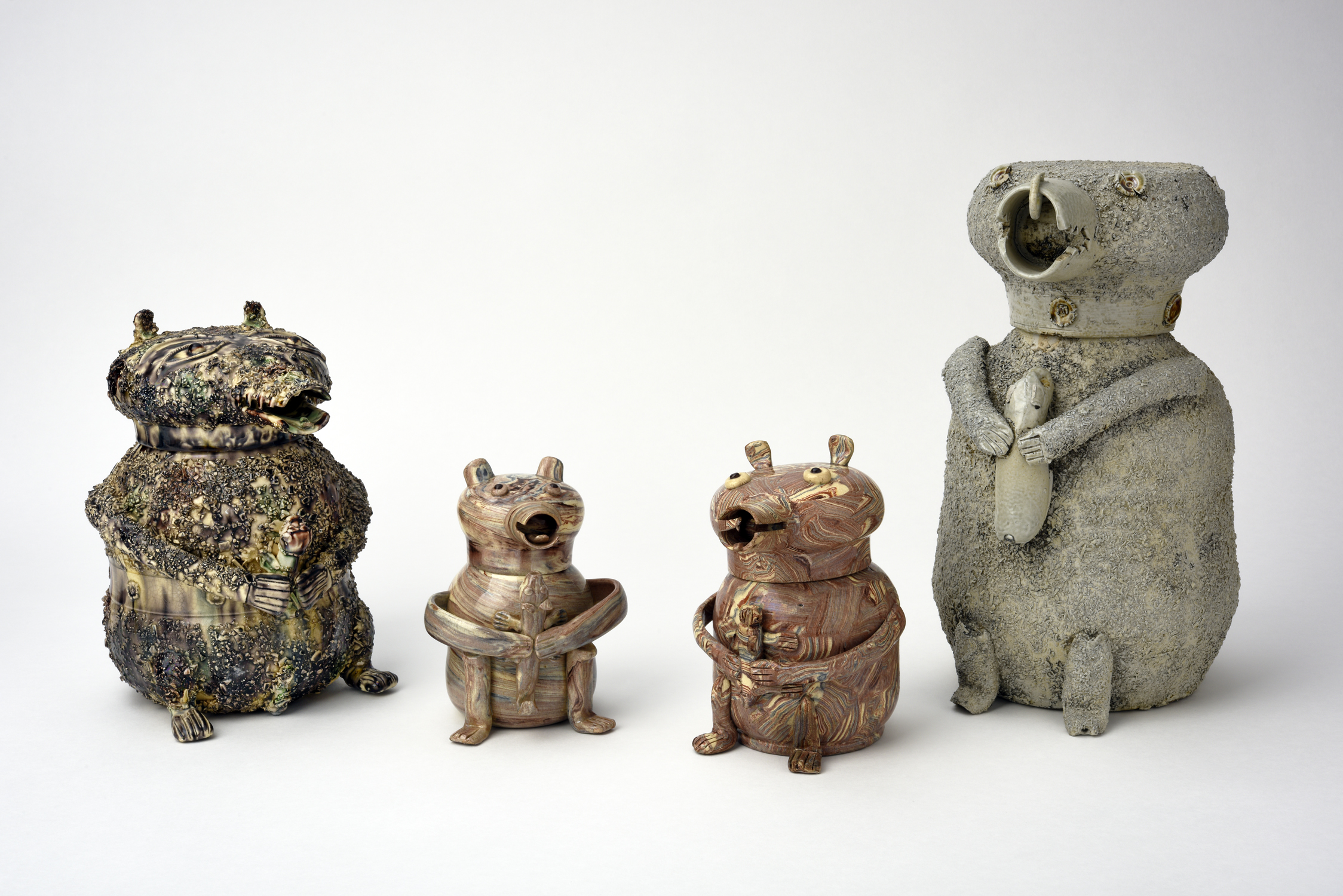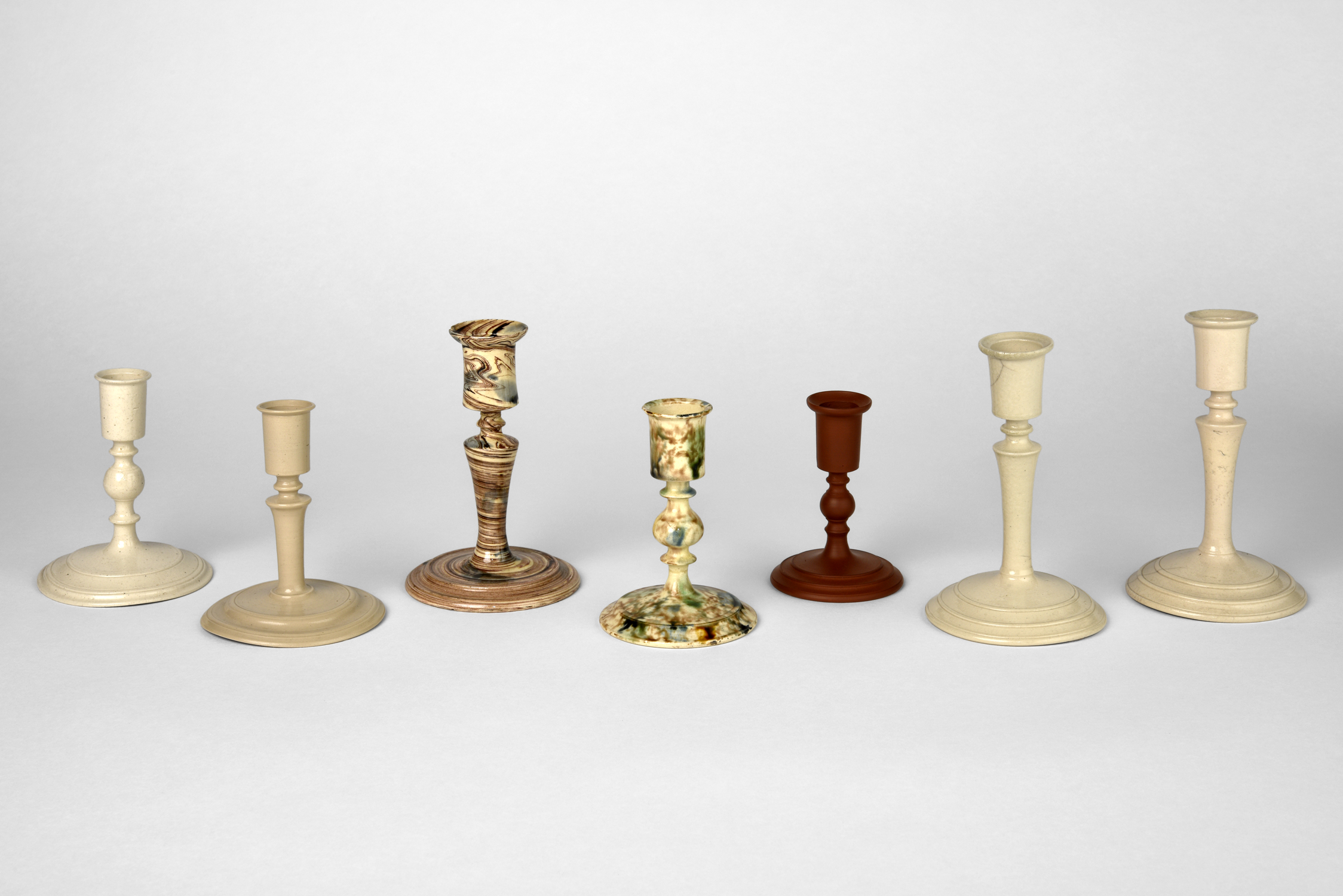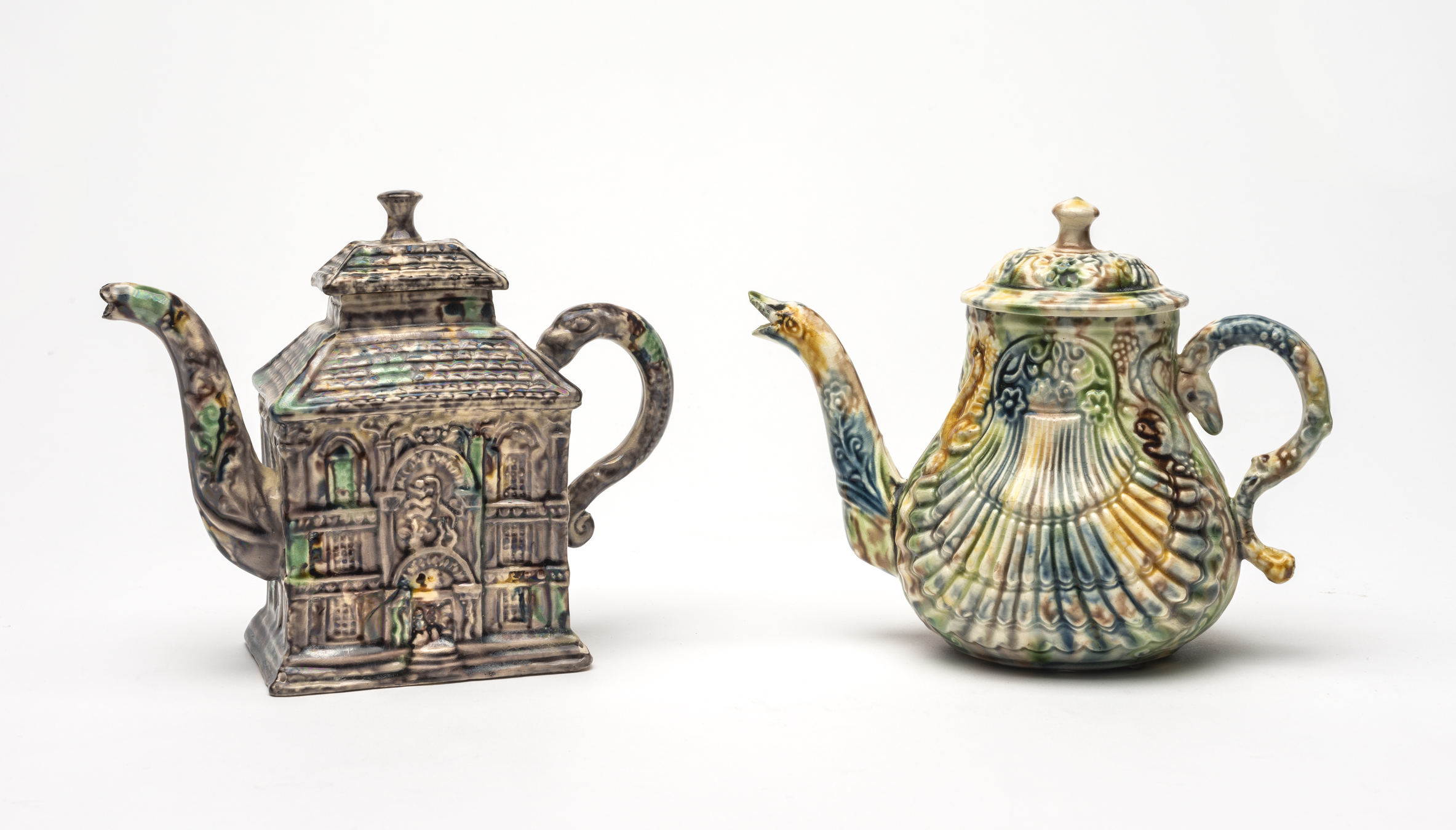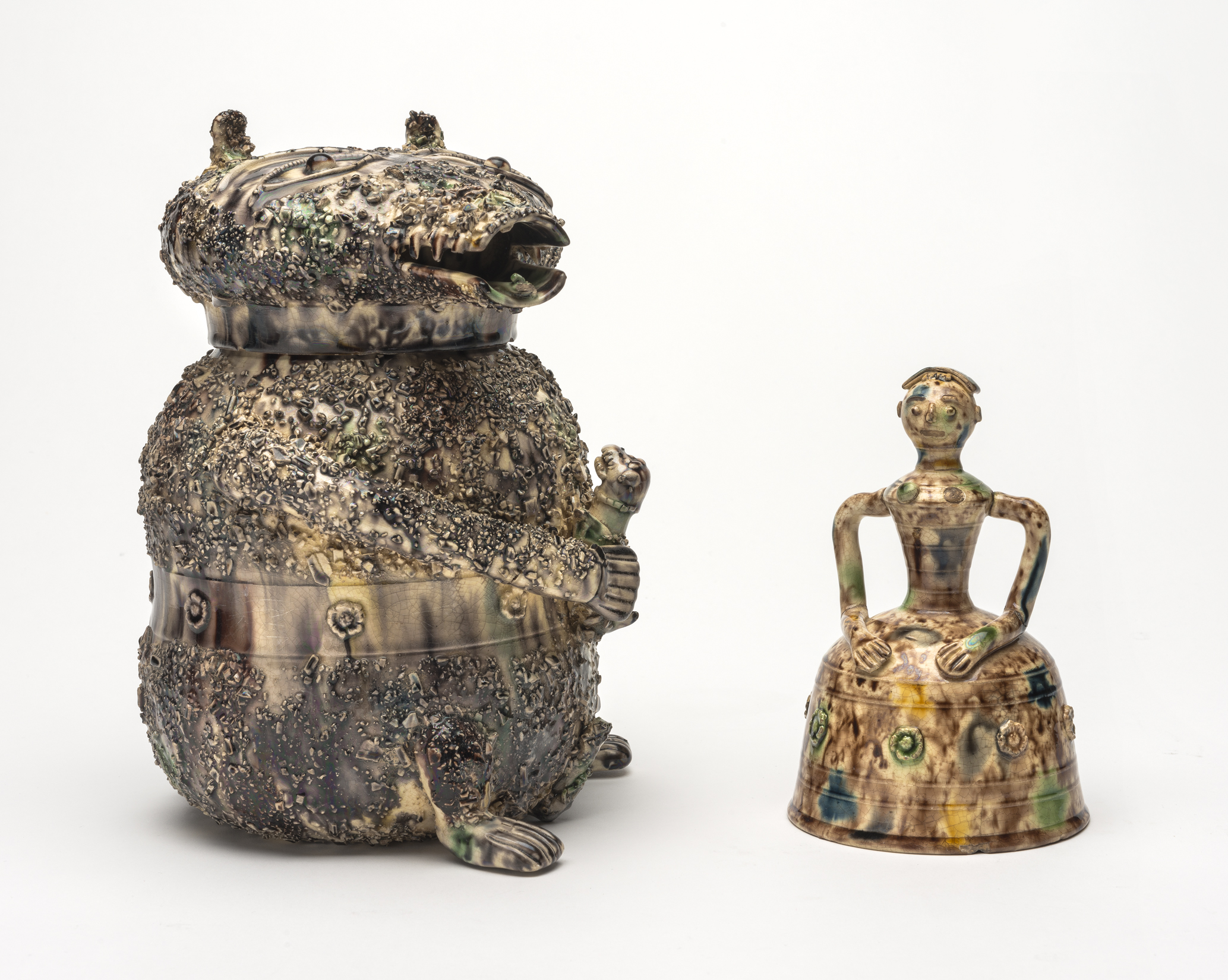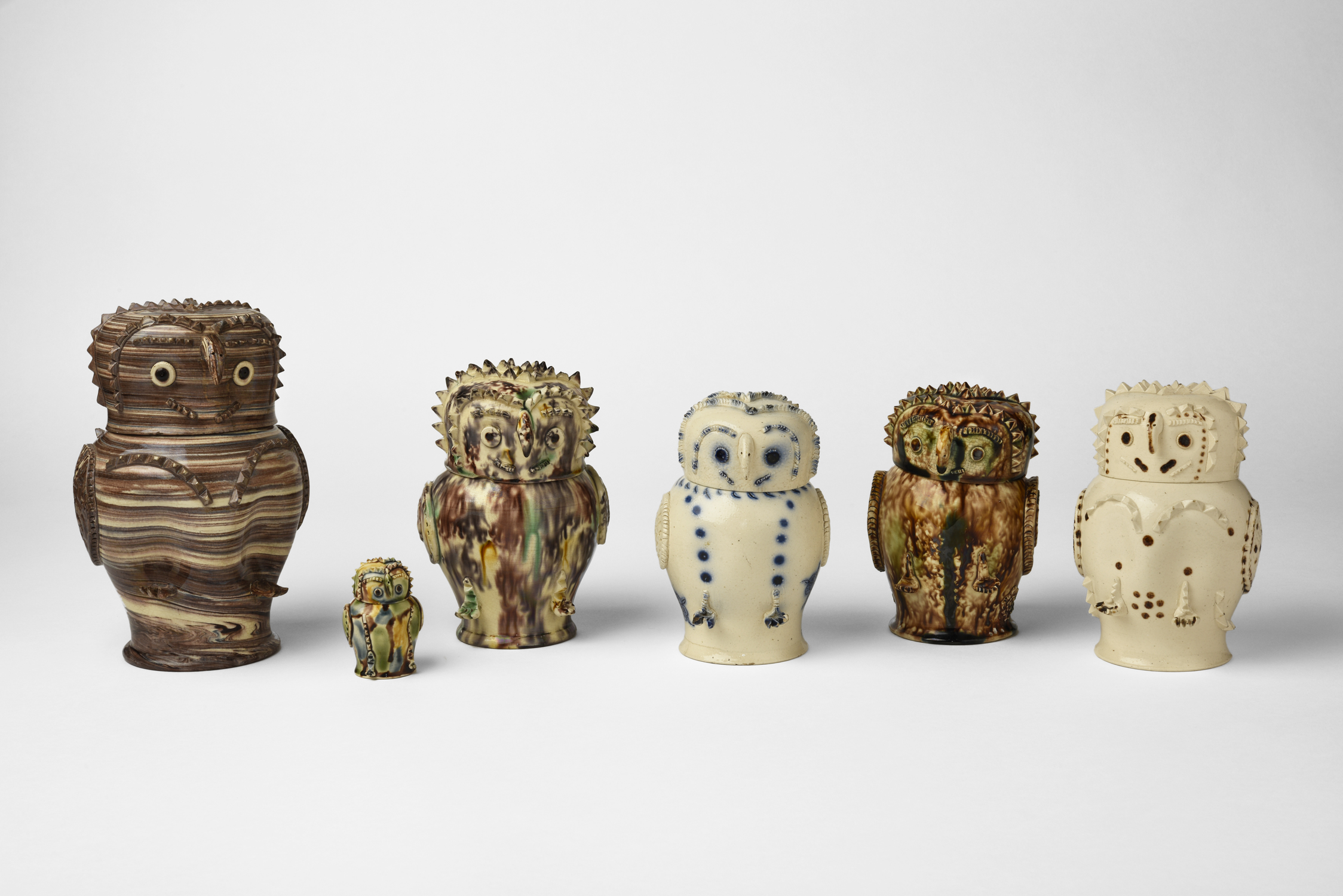The Pots are Guilty but did the Forger Go Free?
The ceramics displayed here were used as evidence in the 1992 London trial of a man accused of “having knowingly sold” modern-made pots as 18th-century antiques. Much of the trial focused on determining the authenticity of these pieces.
Expert witnesses compared these objects to genuine examples and noticed a number of differences that called their authenticity into question. Thermoluminescence analysis determined that these ceramics date to the 20th century.
Verdict
In addition to evidence obtained through connoisseurship and scientific analysis, it was alleged that the accused had used pottery equipment, illustrations in books, and genuine 18th-century pieces for the creation of the objects shown here, which were eventually sold to collector Henry H. Weldon. Despite the overwhelming evidence that these ceramics are fake, the prosecution was unable to convince the jury that the accused had created them with the intent to deceive a potential buyer. He was found innocent.
When fakes are discovered, they are often quietly resold as genuine. Henry Weldon, however, decided to keep the collection so that the pieces would not reappear on the market. He later donated them to Winterthur, where they are available for study.
Broken candelabrum
During the 1992 trial, one of the defense lawyers made a particularly dramatic gesture with his arms and accidently knocked over this candelabrum. Because the defendant was found not guilty, the court was obliged to reimburse the owner, Henry H. Weldon, for the original purchase price instead of the much-reduced value of a fake.
Fake; 1980−90
Earthenware
Gift of Henry H. Weldon in honor of June deH. Weldon 1998.28.1
Bear jugs and teapot
All the objects shown here appeared on the antiques market from the same source and included examples of previously unrecorded types. They are all similar to one another in form and technique, indicating that they were the product of one hand. No genuine examples of these forms are known in earthenware. If genuine, therefore, these would be extremely rare and valuable.
Fakes; 1980−90
Made to imitate 18th-century English pottery
Earthenware and stoneware
Gift of Henry H. Weldon in honor of June deH. Weldon 1998.28.14−.16, .27a,b
Candlesticks
Although they differ in size and color, all of the candlesticks shown here have similar bowls, stems, and production marks. They appeared on the market from the same source and include examples of previously unrecorded types.
Fakes; 1980−90
Made to imitate 18th-century English pottery
Earthenware and stoneware
Gift of Henry H. Weldon in honor of June deH. Weldon 1998.28.3−.7, .22, .23
Teapots
Many of the fakes purchased by the Weldons are examples of well-known forms that have been reproduced using previously unknown clay bodies and glazes. While genuine 18th-century teapots in the form of a house and a pecton (scallop) shell are commonly found in salt-glazed stoneware, these examples with Whieldon-type glazed decoration are unique; they are the only examples known.
Fakes; 1980−90
Made to imitate 18th-century English pottery
Earthenware
Gift of Henry H. Weldon in honor of June deH. Weldon 1998.28.2, .10a,b
Coffeepots
When you find two pieces with the same exact detail, such as the spouts and handles of these coffeepots, it suggests that they came from the same manufacturer. In the trial involving the Weldon collection, curators and scientists tried to prove that these modern pieces were made by one person.
Fakes; 1980−90
Made to imitate 18th-century English pottery
Earthenware
Gift of Henry H. Weldon in honor of June deH. Weldon 1998.28.8, .9, .25a,b
Bell woman and bear jug
Look closely at the relief-molded flower design on the bell woman’s skirt. That same design appears on the bear jug to her right. Idetifying duplicate motifs is one way to attribute pottery to a single maker.
Fakes; 1980−90
Made to imitate 18th-century English pottery
Earthenware
Gift of Henry H. Weldon in honor of June deH. Weldon 1998.28.21, .13a,b
Owl jugs
Genuine owl jugs exhibit a wide range of sizes, shapes, forms, and construction methods. All of the examples shown here appeared on the market from the same source and include previously unrecorded types. They are all similar in form and technique, indicating that they were the product of one hand. Notice how often their color combination appears on other objects in the case.
Fakes; 1980−90
Made to imitate 18th-century English pottery
Earthenware and stoneware
Gift of Henry H. Weldon in honor of June deH. Weldon 1998.28.11, .12, .17−20a,b
Bibliography
Williams, Peter, and Pat Halfpenny. A Passion for Pottery: Further Selections from the Henry H. Weldon Collection. New York: Sotheby’s Publications, 2000.

